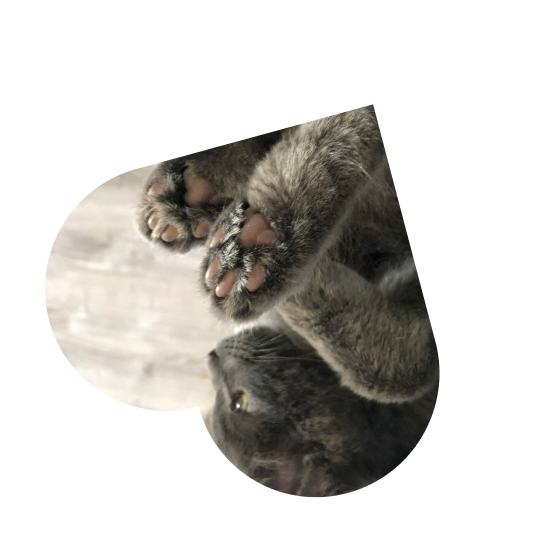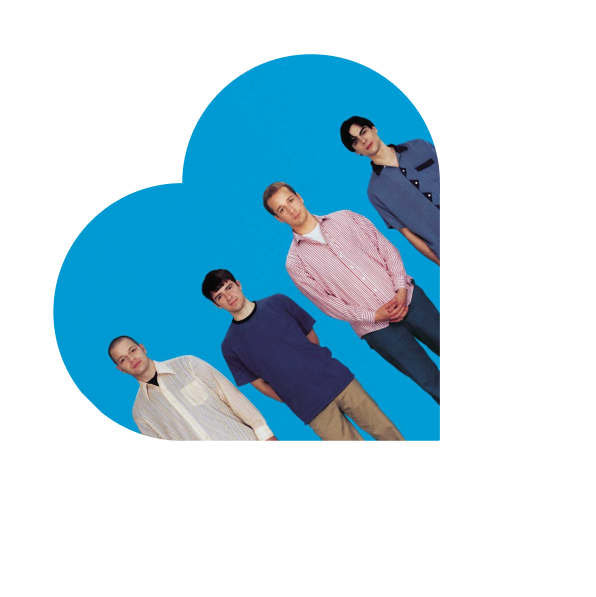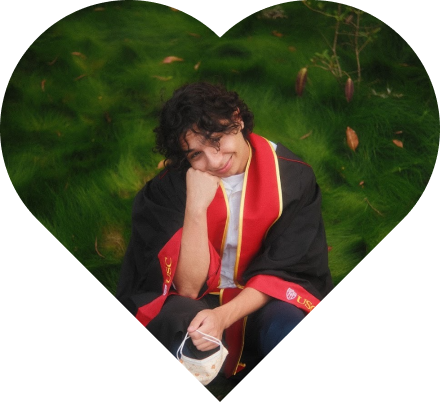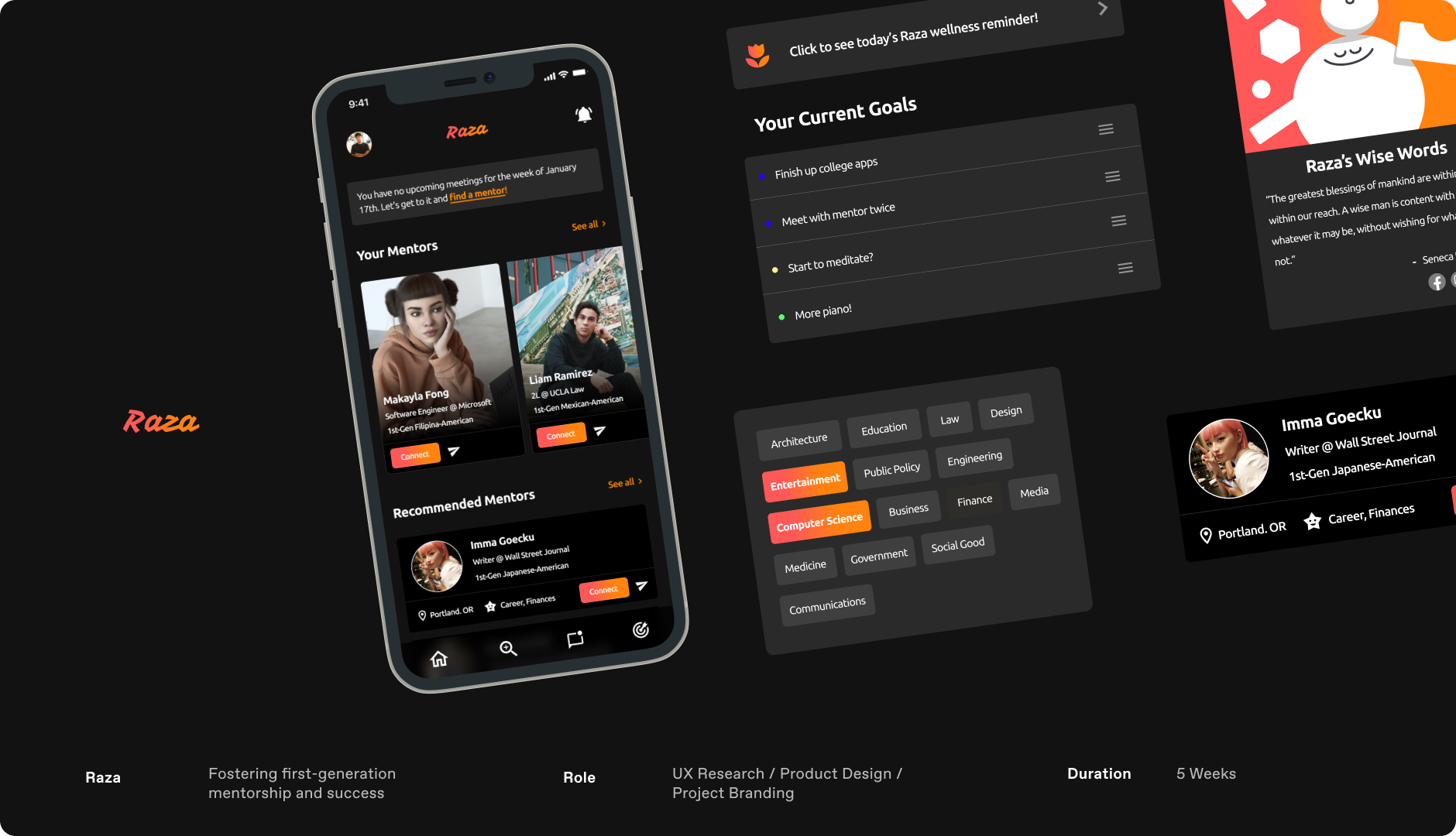
Overview
Raza is an application designed to provide mentorship to first-generation students. As a first-generation student who was involved in multiple first-gen orgs in undergrad, I found mentorship and community to be pivotal in my growth and successes as a student - especially early on in my college career. As both a mentor and mentee in first-gen programs, I have talked to students about their qualms with imposter syndrome, academics, finances, and remote learning.
My time in these communities gave me an extensive amount of information and individuals to reach out to in order to discuss the struggles first-generation students face in their struggle to navigate university and beyond. When designing Raza I asked myself many why questions about how might I design an application that helped others fighting to escape generational barriers and I am ecstatic with my end product. Raza serves as a home for first-gen students to find mentors whether they be peers, professionals, or the likes, and to provide a central place for establishing goals that will help stay the course.
My time in these communities gave me an extensive amount of information and individuals to reach out to in order to discuss the struggles first-generation students face in their struggle to navigate university and beyond. When designing Raza I asked myself many why questions about how might I design an application that helped others fighting to escape generational barriers and I am ecstatic with my end product. Raza serves as a home for first-gen students to find mentors whether they be peers, professionals, or the likes, and to provide a central place for establishing goals that will help stay the course.
Discovery / Empathy ︎︎
User Research
Due to my proximity to various first-generation student communities, I luckily had quick access to real users who are currently navigating or have previously navigated life as a first-generation student and professional. With this, I was able to kick off my discovery process by carrying out 5 user interviews where I probed my participants on their struggles being first-generation students, how they connect with others, and their personal experience with mentorship.
These conversations yielded powerful responses that allowed me to begin ideation and develop early user profiles to guide the rest of my process.
These conversations yielded powerful responses that allowed me to begin ideation and develop early user profiles to guide the rest of my process.

User Personas
With the information I gathered from my interviews, I compiled an aggregate representation of my participants in the form of user personas. My user personas represent a potential portion of my end users and by designing to meet their needs, I was able to ensure that I alleviated the initial user pain points facing this project.
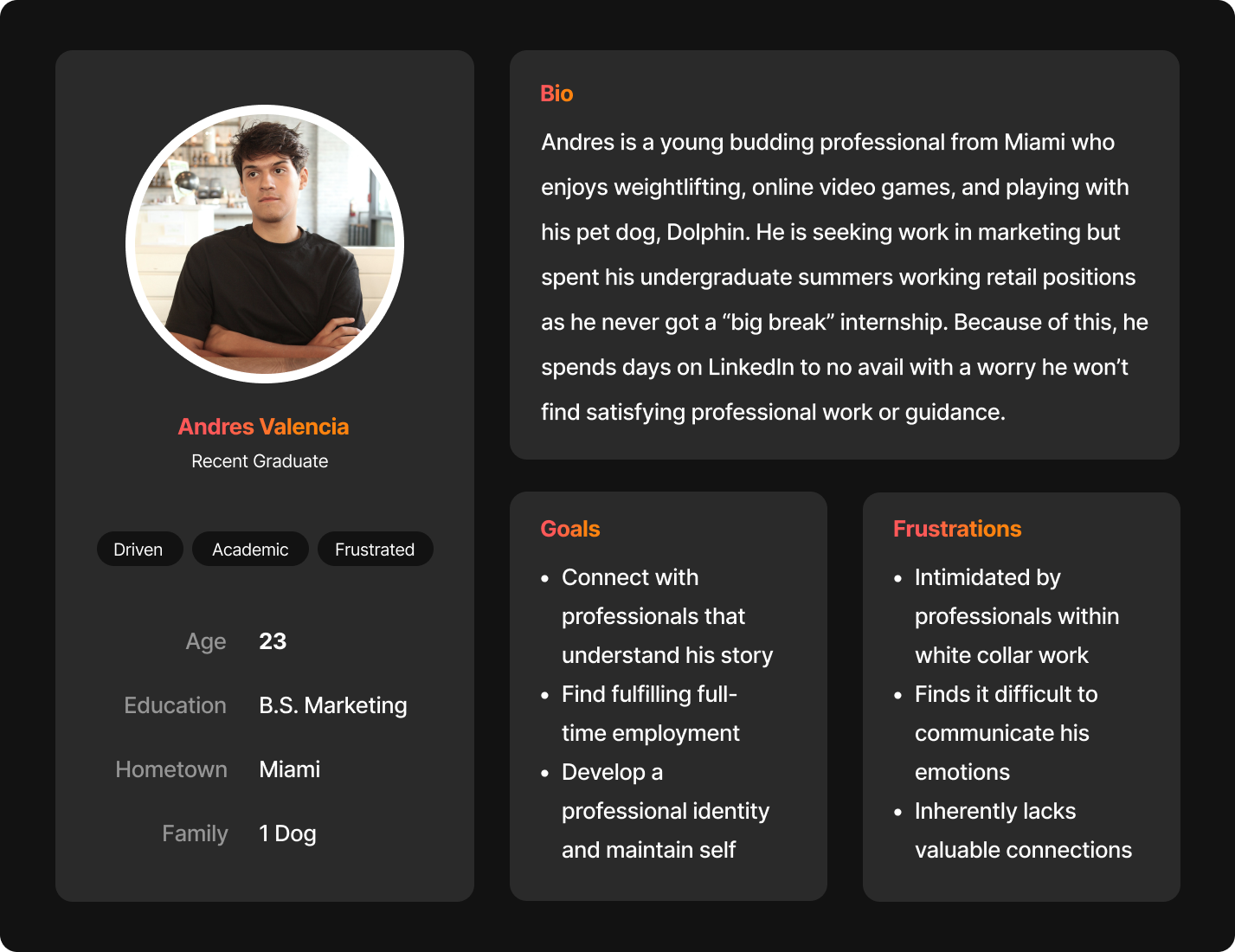
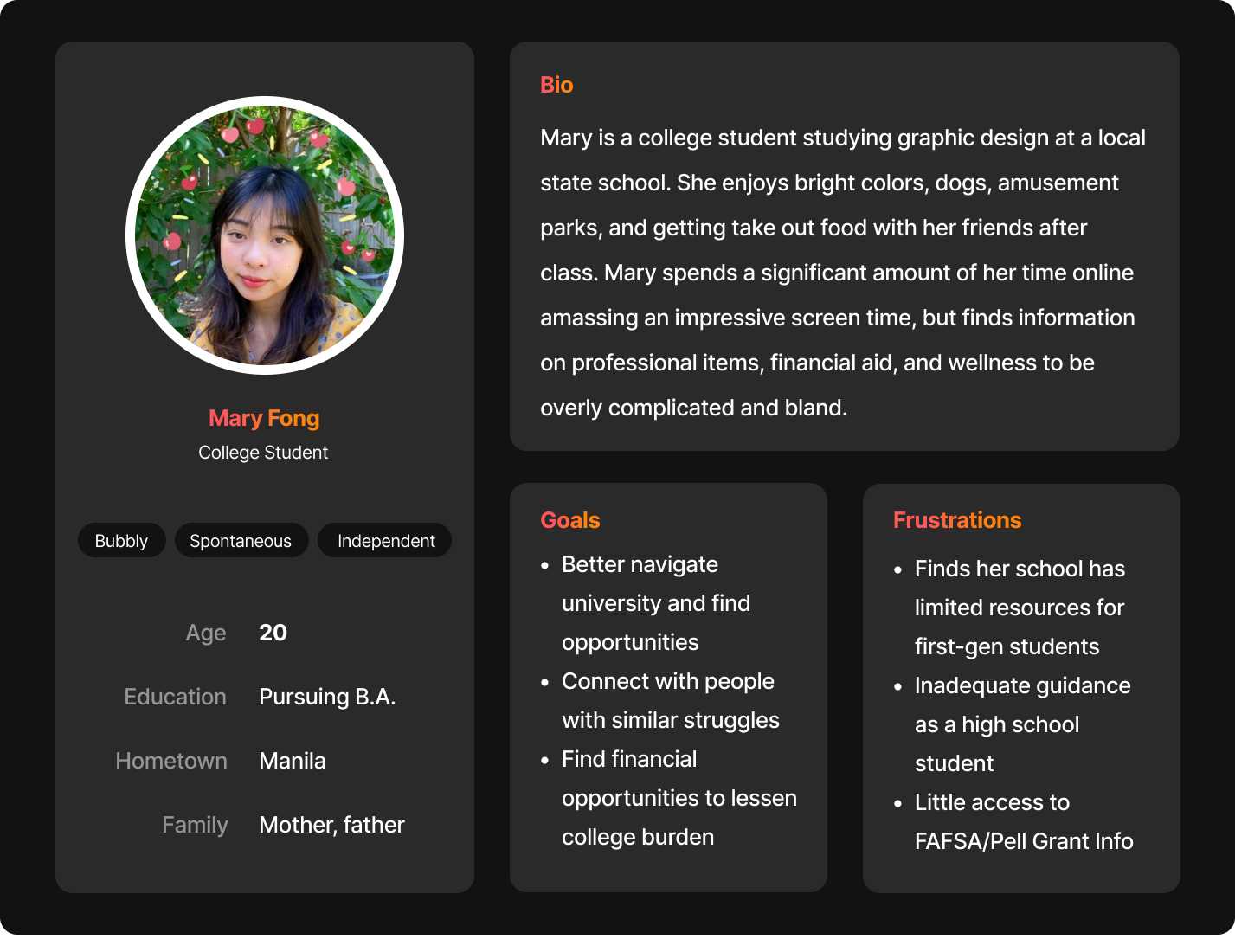
Competitive Audit
To wrap up the early discovery phases, I conducted a competitve audit that proved to be vastly insightful. On my first round of auditing, I discovered 4 mentor apps (the highest rated in the app store) which proved to be largely dysfunctional - this highlighted elements of deception that largely draw me to working in tech. I found these fake review ridden applications to be red flags for issues of data privacy as they allowed for cross-application log ins but proved to not offer any services.
Moving forward, I was able to discover more functional and useful applications that helped guide me on working through current industry best practices, gaps in the market, and much more.
Moving forward, I was able to discover more functional and useful applications that helped guide me on working through current industry best practices, gaps in the market, and much more.

Ideation / Prototyping ︎
User Flow
After wrapping up my early phases of research, I moved on to mapping out the basic architecture of Raza. I created three main user flows and mapped them out using the basic screens they would require to complete. I find user flow mapping to be particularly useful as they allow for my ensuing wireframes to have an intuitive structure that logically makes sense from the start, allowing for more focus for information layout and then visual design.

Digital Wireframes
With my app architecture in order, I moved into Figma to begin my low-fidelity digital wireframes. I created flows to alleviate my user’s painpoints. Each flow addressed a specific insight from my user interviews which allowed for a targeted and more straightforward design process.


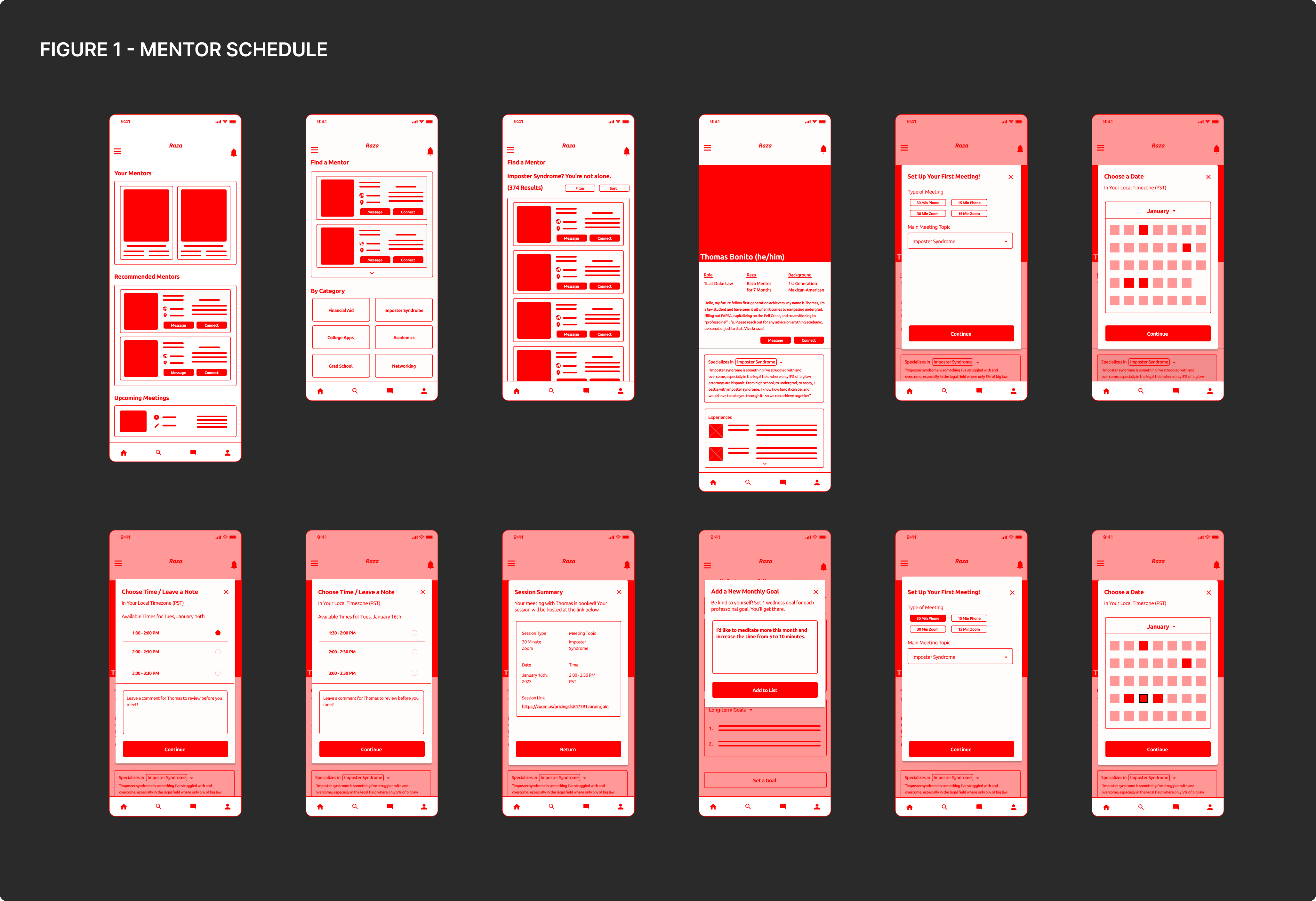
Usability Testing
At this point, I moved into a moderated usability study where I prompted 5 participants to navigate the three central flows of my application. On my self-guided projects, serving as a UX researcher has been the most difficult process to fully carry out. However, during this project I happened to be reading Steven Krug’s book, Don’t Make Me Think, which gave me the confidence to know I could find actionable insights with samples as small as 3 - the important thing was just that I was watching real users interact with my prototype. Using Krug’s usability testing script from Rocket Science Made Easy, I had a newfound prowess for my usability testing (thank you Mr. Krug!)
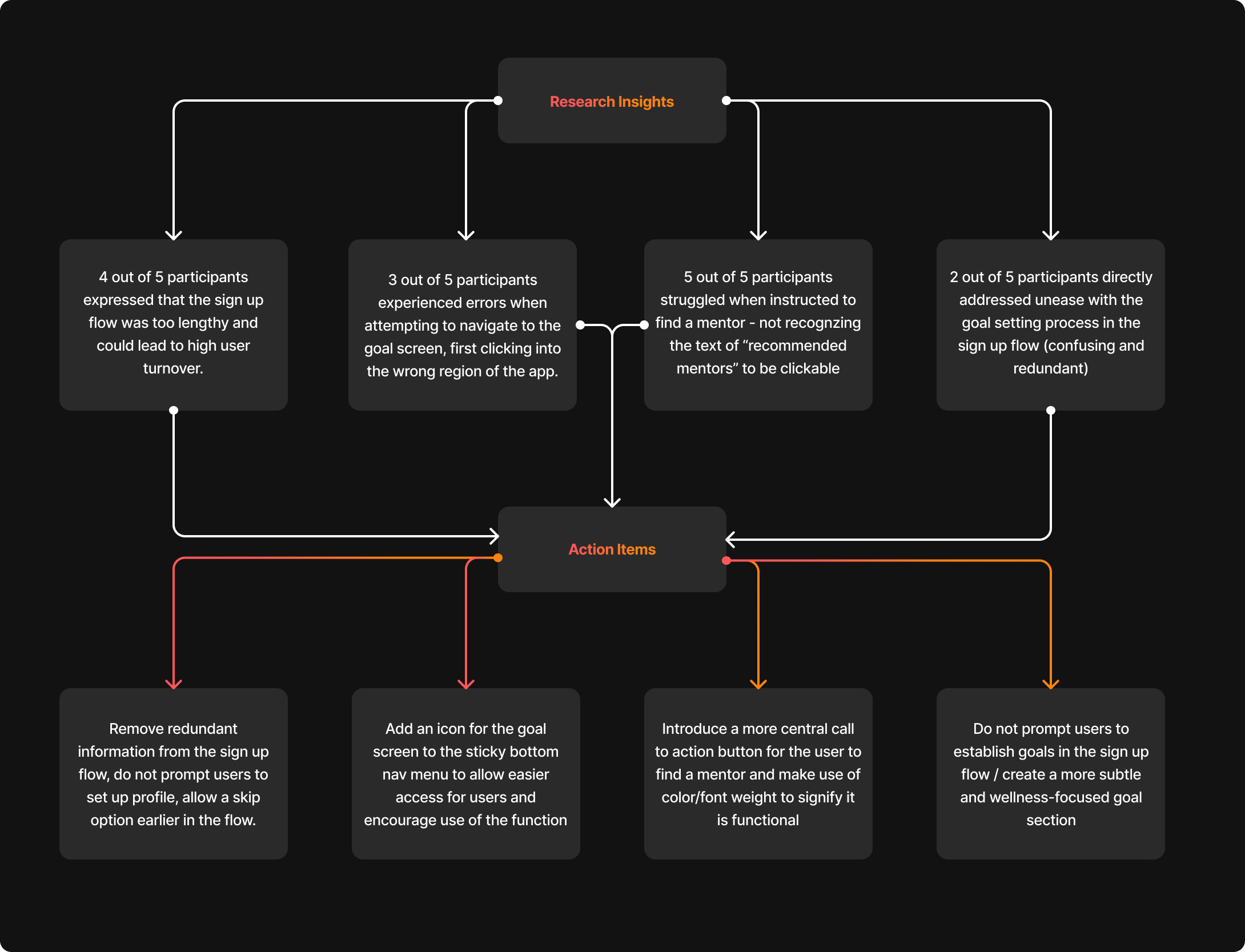
High-Fi Prototype
Once I sat with my research results and moved into altering my designs - it was ready to get some color involved! I continued to ideate and work towards a final product that operated as I imagined Raza to truly function. After many many mix-ups and mock-ups, I arrived at a product fullly functioning with 3 various flows (sign up, mentor booking, goal setting / wellness check) that I am proud to share. Check out the full prototype down below!
Conclusion & Moving Forward ︎
Limitations
For the first time, I do not feel as if the greatest limitation for my product was user research. Because of my involvement in first-generation organizations, I was able to converse with and obtain many tangible insights from first-generation students that propelled this project to completion. In the later stages (high-fidelity prototype) I do wish I had the resources to carry out a full-scale usability study. Perhaps one day I will bring this passion project to life with the appropriate team of first-gen professionals and give a valuable service to the world.
Takeaways
This project taught me a significant amount about the strength of talking directly to my end users and being able to empathize with them. When I reached the point that I was designing for a purpose and for a project that made me feel warm, I felt established as a product designer. To bring to life something that I wish existed is a feeling I can only describe as humbling. Raza is a project I will hold close to my heart for years to come and I am thankful that you (whoever you may be) took the time to check it out!
Moving Forward
To continue with Raza, I am most compelled to further enhance a community feature for the application. I imagine a feature that allows first-gen students to work together to coordinate rides to school, financial aid, scholarship opportunities, and much more. I believe Raza could grow into a sort of home base for first-gen students -- alleviating the feelings of isolation so many of us face.
Thank you to my research participants, my first-generation community, my design critics, and once again, you (!!!) for checking it out.
- M :)
Thank you to my research participants, my first-generation community, my design critics, and once again, you (!!!) for checking it out.
- M :)
